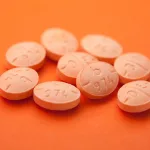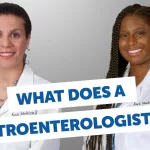Candida is a type of yeast — a fungus — that normally inhabits and exists on various parts of your body. The most common species among the more than 20 types of Candida is Candida albicans.
When Candida multiplies excessively, it can produce a fungal infection known as candidiasis. Symptoms differ depending on which body region is affected.
Continue reading to learn about how candidiasis is tested for and treated when it affects the vagina, mouth and throat, or the esophagus.

Vaginal candidiasis
An overgrowth of Candida in the vaginal area is commonly called a vaginal yeast infection. It may also be referred to as vaginal candidiasis or candidal vaginitis.
Common signs and symptoms of vaginal candidiasis include:
- itching and irritation of the vulva and vagina
- unusual vaginal discharge
- pain or burning while urinating
- pain during sexual activity
- swelling of the vulval tissues
Testing
Many symptoms of vaginal candidiasis overlap with other vaginal infections, so laboratory testing is often required for a definitive diagnosis.
Your clinician will usually collect a sample of vaginal discharge. This specimen can be examined microscopically or sent to a lab where a fungal culture is performed.
There are also over-the-counter home kits available at pharmacies or online that measure the pH of vaginal secretions to assess acidity.
Most of these at-home tests will change color if the acidity level is outside the expected range. When a test shows normal acidity, clinicians often rule out bacterial vaginosis and consider treating a yeast infection instead.
According to guidance, shifts in vaginal pH don’t always signify an infection, and pH testing alone can’t distinguish between different causes of vaginitis.
If an at-home test suggests your vaginal pH is elevated, see your healthcare provider for further evaluation and treatment advice.
Treatment
Your provider may prescribe antifungal agents such as miconazole, terconazole, or fluconazole. Note that oral fluconazole is not recommended for pregnant individuals.
Candidiasis in the mouth or throat
Candidiasis affecting the mouth and throat is known as oropharyngeal candidiasis, or thrush. Symptoms may include:
- white patches on the tongue, inner cheeks, roof of the mouth, or throat
- soreness
- redness
- reduced sense of taste
- pain or difficulty when eating or swallowing
- a cotton-like sensation in the mouth
- red, cracked skin at the mouth corners
Testing
A healthcare professional can often recognize thrush by visual inspection. Still, your clinician may swab the mouth or throat and send the sample to a lab for identification, typically using microscopic analysis.
Your provider might also request blood testing to check whether an underlying medical issue is contributing to the thrush.
Treatment
Treatment usually involves topical antifungal medications designed to be held in the mouth for a prescribed duration.
Candidiasis in the esophagus
Esophageal candidiasis, also called Candida esophagitis, refers to candidiasis in the esophagus — the tube that connects the throat to the stomach.
Testing
To confirm esophageal candidiasis, your clinician may recommend an endoscopy, which uses a flexible tube with a light and camera to inspect the digestive tract.
During the procedure, your doctor may take a tissue sample (biopsy) and send it to the laboratory to identify which fungus or bacteria are responsible for your symptoms.
Treatment
Similar to thrush, esophageal candidiasis is often treated with antifungal medications that act locally in the oral and upper digestive tract, as directed by your healthcare provider.
Takeaway
Candida is a normal component of the body’s microbial community, but overgrowth can cause symptomatic infection that may require therapy.
Because symptoms vary by affected area and can mimic other conditions, appropriate testing by a healthcare provider is important to reach an accurate diagnosis.
Some forms of candidiasis can be screened at home, but for definitive diagnosis and to determine the best treatment plan, make an appointment with your doctor.


















Leave a Reply
You must be logged in to post a comment.